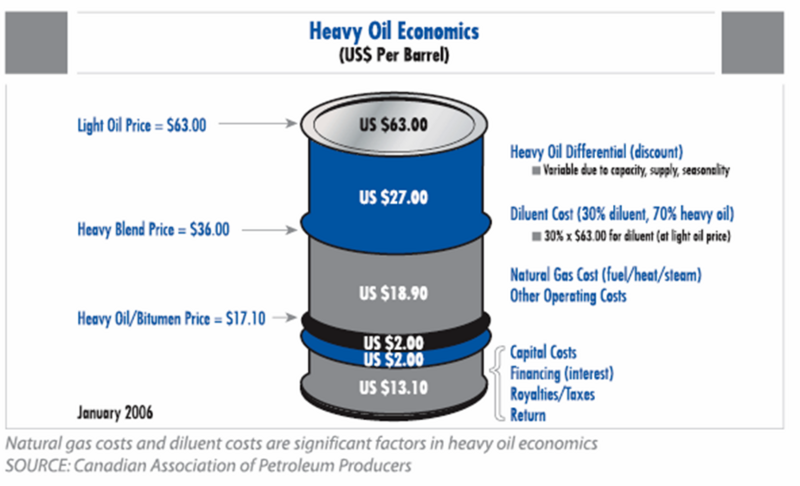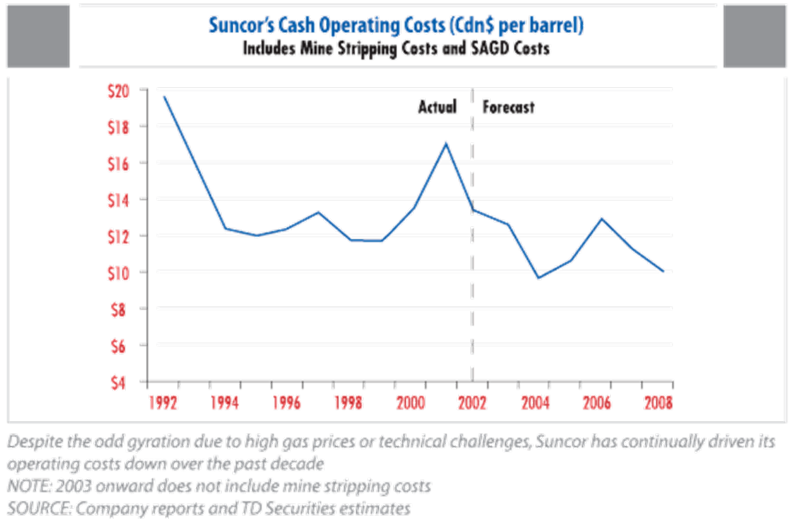


Posted on 01/23/2007 9:05:17 AM PST by thackney
TORONTO--(BUSINESS WIRE)--The Bush administration last week urged Canada's natural resources agency to increase oil sands production in the Alberta province five-fold to 5 million barrels per day, but a spokesman for Prime Minister Stephen Harper said "not at the expense of the environment." Meanwhile, while Harper turns his back on Alberta, oil companies are steaming ahead with plans of their own to develop the world's largest oil reserve.
Yet, according to the minutes of the Houston meeting, to multiply its output by five and to do it quickly, Canada would have to streamline its environmental regulations for new energy projects. The Tories say that's not about to happen, not at the expense of the environment.
This week, Patch International, Inc. (OTCBB:PTCH) announced that DeGolyer and MacNaughton completed their independent resource reserve report on the Company's Dover and Firebag oil sands properties which showed probable reserves of 154 million barrels of oil and another 381 million possible. While that may make you yawn, the fact that Patch got its hands on high-value oil sands leases in the middle of the two major plays is something to crow about. Surrounding Patch is the "who's who" of Canadian oil sands operators - Chevron, Suncor and Petro-Canada.
Patch's Dover oil sands project consists of 20,480 acres with 96 million barrels of probable reserves and 264 possible. While that may sound like a large piece of property, Petro-Canada (TSX:PCA) owns several townships and is producing 25,000 barrels per day through a Steam Assisted Gravity Drainage, or SAGD, recovery system, making Patch's property seem minute. Petro-Canada has not disclosed its reserves, though with such a vast stretch of property, it will be years before test wells can be drilled. Patch is moving to drill 16 wells and conduct 63 square miles of 2D seismic tests in the first quarter of this year.
West of Patch's Dover property is Chevron (NYSE:CVX) with 100 new well licenses and its Ells R property slated to begin producing 100,000bpd in 2015.
In the Firebag region, Patch holds 58 million probable barrels of oil and 117 million possible. Its Firebag property consists of 11,520 acres. The company plans on drilling 12 wells and conducting 47 square miles of 2D seismic shots. Drilling is expected to commence shortly. The big player in the Firebag property is Suncor Energy Inc. (TSX:SU), with 9.2 billion barrels of reserves, though like Petro-Canada, its holdings are more then ten-fold in size when compared to Patch. Suncor is operating a 40,000bpd SAGD oil recovery system and plans to up that production to 575,000bpd. To North is EnCana Corp. (TSX:ECA) with its EnCana Borealis project estimated to produce 100,000bpd.
Patch has laid itself out to be the largest junior oil company in the Alberta oil sands region and captured top talent in luring Mr. Terry Buchanan away from Superior Oil, ExxonMobil's Canadian division, where Buchanan spent the last 24-years as Superior's Geo Science Advisor. When asked why Buchanan left a key management role in a major oil company to join a little-known junior, he told Source Press U.S. news affiliate, AXcess News, that it was the properties Patch acquired as well as the fact that the company had a well-laid out plan of operations. "You just don't see that kind of opportunity come around that often," said Buchanan.
So while Harper's government says the environment must be preserved, companies big and small are full steam ahead in their own development plans and three pipelines are also in various stages of development to move that oil to market; two will serve the U.S. while a third is planned for export to China.
http://www.sourcepress.com.
You may be overlooking, to some extent, the number of projects in current stages of development, including new refineries already under construction and at least 10 upgrader units in various forms of either construction, engineering or procurement.
Current projects could very easily double or triple the output in the next two years. Combine this with expansions (not new technology) of existing facilities and the five fold increase is entirely possible.
In Nov. 2005 I saw a report that the money scheduled then, to be spent in Alberta, was estimated at $10 billion USD.
If they want to protect the environment the first order of business should be sucking all that nasty black oil out of the sand. :)
You greatly overestimate how much production those plants are going to produce. It is going to take nine years to almost triple, if they can get the equipment, permits and labor.
Oil sands take over center stage
Conference Board of Canada bets on C$105B in upstream, upgrader spending over 10 years; by 2008 annual spending at C$15 billion; worker shortfall could hit 350,000 by 2025
And that doesn’t include the billions of dollars of planned oil sands pipelines within Alberta and from the province to the United States and British Columbia coast.
The red-hot energy sector is creating demand for head office employment in Calgary, which has climbed from 11,000 to 19,400 since the turn of the century, beating Canada’s three largest cities — Toronto, Montreal and Vancouver.
Conference board deputy chief economist Paul Darby said the job demand is “going to get worse before it gets better,” estimating that Alberta could have a shortfall of a staggering 350,000 workers by 2025.
The major squeeze is expected in 2008 and 2009 when the oil sands expansion will peak.
I think you left out a zero, or that is only for one year of projects.
I think that is correct, for one year. It was 14 months ago. ;)
A good summary report briefly discussing each project can be found at
http://www.alberta-canada.com/oandg/files/pdf/oilSandsUpdate_December2006.pdf
Survey results from early 2006 indicate that the Alberta oil sands industry may spend $65 billion on new oil sands projects in the 2006 to 2011 period and as much as $81.6 billion in the 2006 to 2016 period. Another $14.9 billion may be spent on sustaining capital during 2005 to 2015 period.



In a television interview with the mine operators, they characterized their process as helping the environment in as much as it takes oil saturated sand, removes the oil thereby cleaning the sand, and returning the oil-free sand to it's original site. A cleanup operation if you will.
Ping.
Excellent report, very much appreciated!
At the gold mines of Nevada near Carlin in talking to the people there, they said a percentage of their revenue is set aside for restoration projects. They have a very large open pit that relies on dewatering to stay dry. Long term plan is to turn the area into a lake and spend the money set aside to restore and improve the land. One guy told me:
"My dream is to take my grand kids fishing on the lake and tell them that I helped to create it"
I am confident that his dream will come true.
Disclaimer: Opinions posted on Free Republic are those of the individual posters and do not necessarily represent the opinion of Free Republic or its management. All materials posted herein are protected by copyright law and the exemption for fair use of copyrighted works.